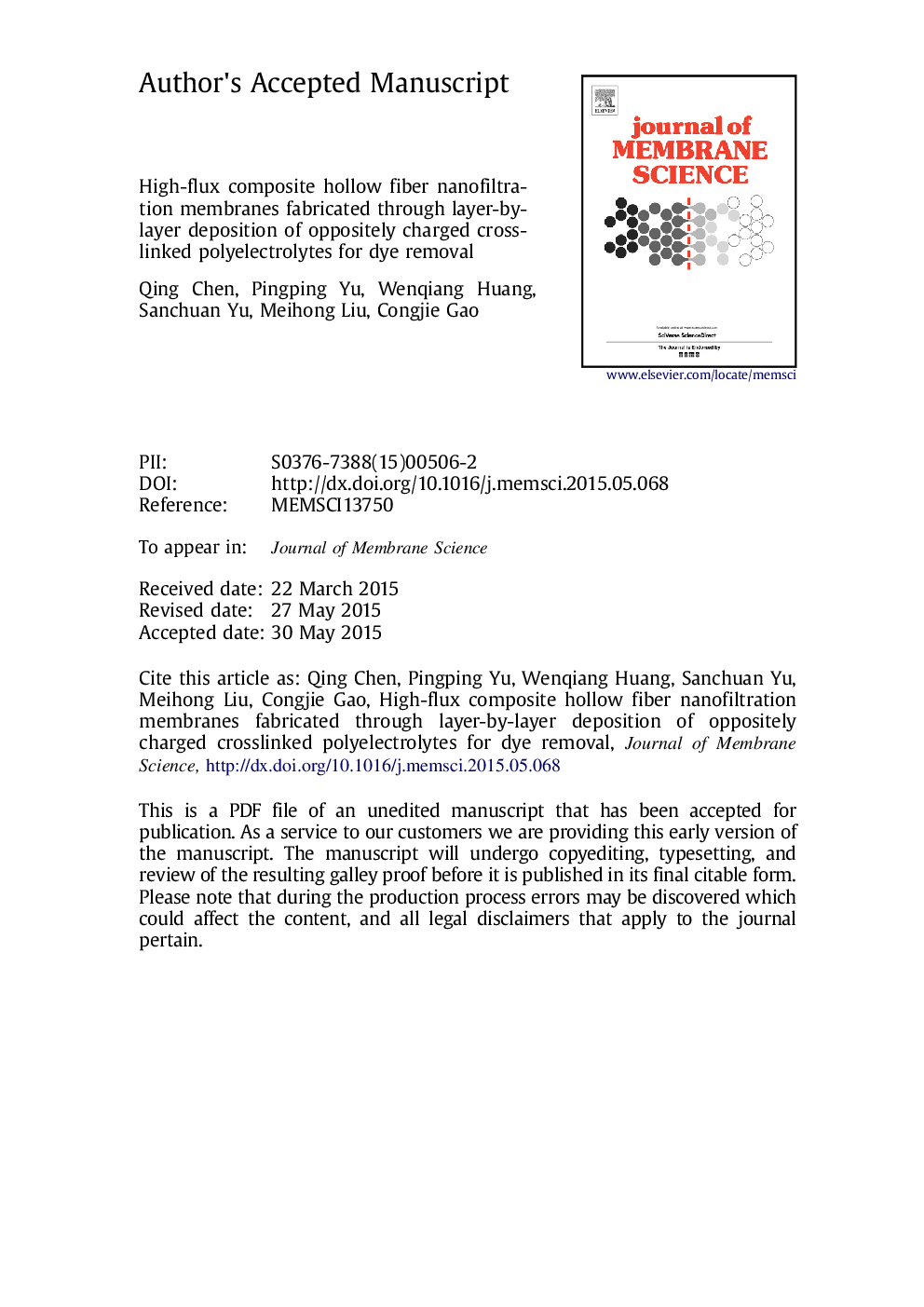| Article ID | Journal | Published Year | Pages | File Type |
|---|---|---|---|---|
| 7021247 | Journal of Membrane Science | 2015 | 41 Pages |
Abstract
Composite hollow fiber nanofiltration membranes with an active skin layer comprising only one polyelectrolyte bilayer were prepared through layer-by-layer deposition of oppositely charged polyelectrolytes of sodium carboxymethyl cellulose (CMCNa) and polyethylenimine (PEI) on polypropylene hollow fiber substrate, with glutaraldehyde crosslinking between each deposition. Membrane performance was optimized by varying the contents of CMCNa and PEI of the deposition solutions and the obtained membranes were characterized in terms of physico-chemical characteristics and permeation properties. Experiments revealed that the obtained membrane was positively charged and exhibited a salt rejection order of MgCl2>CaCl2>KCl>NaCl>MgSO4>Na2SO4 at neutral pH. The optimized membrane had a molecular weight cut-off of about 730 g/mol and possessed a pure water permeability of 14.2 l/m2 h bar, MgCl2 rejection of 93.2% and NaCl rejection of 36.2% in filtration of 500 mg/l salt aqueous solution at 3.0 bar. The desired membrane could also effectively remove organic dyes from aqueous solution, showing retentions of 99.8%, 99.6% and 99.4% to Brilliant green, Victoria blue B and Congo red, respectively, under the trans-membrane pressure of 3.0 bar. These promising results demonstrate that the technique developed in this study is potentially applicable for preparing high-flux nanofiltration membrane for dye removal and partial desalination.
Related Topics
Physical Sciences and Engineering
Chemical Engineering
Filtration and Separation
Authors
Qing Chen, Pingping Yu, Wenqiang Huang, Sanchuan Yu, Meihong Liu, Congjie Gao,
